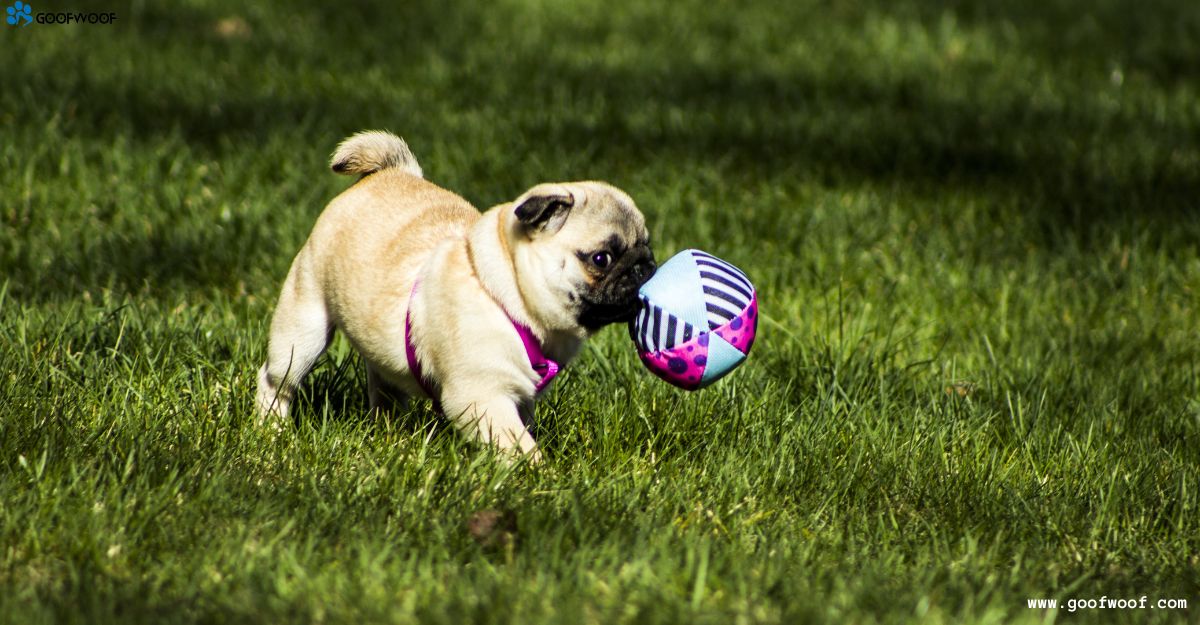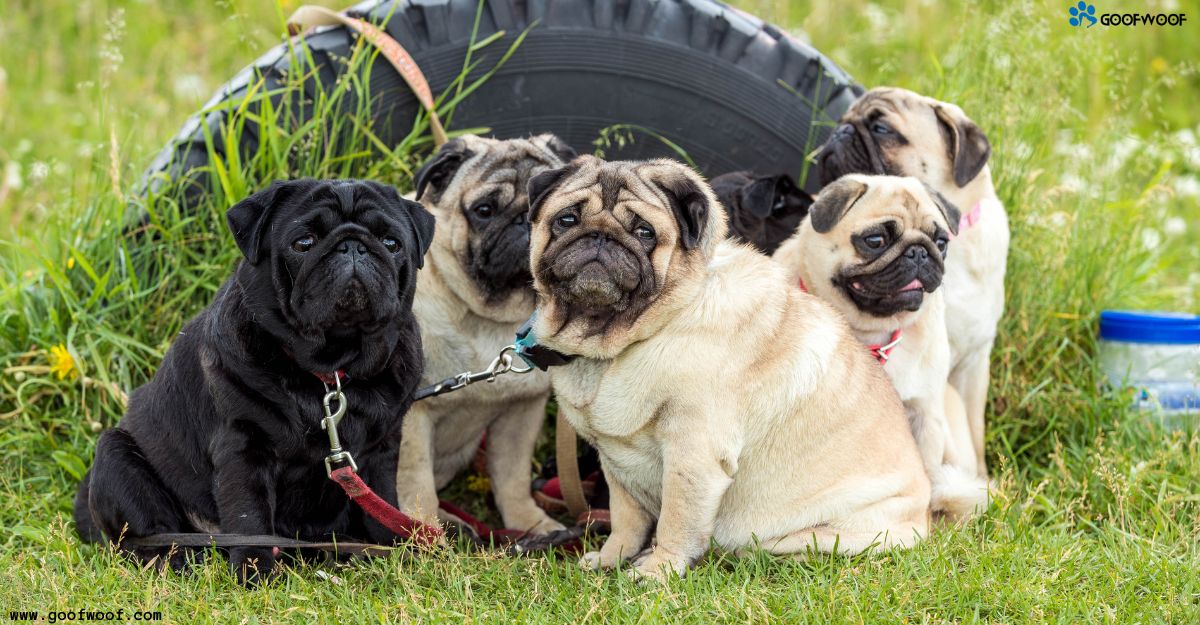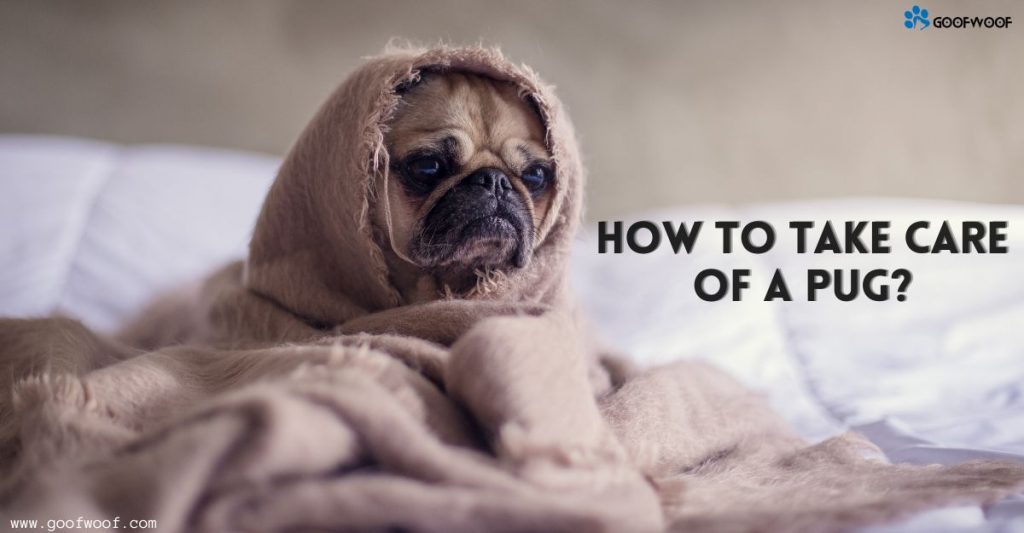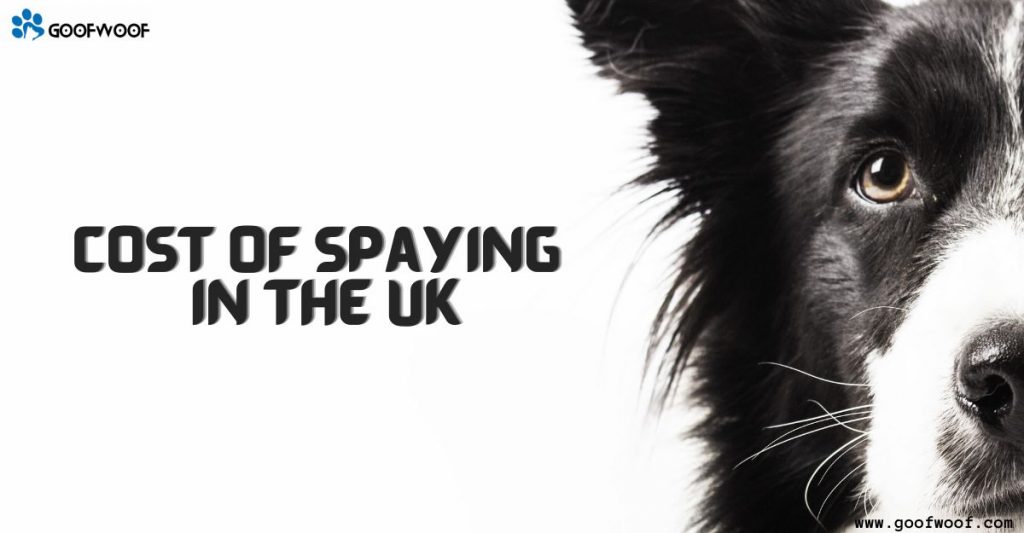Pugs are a small, affectionate breed of dog that can make great pets. They are known for their distinctive wrinkled faces, short snouts, and compact, muscular bodies. Pugs are known for their playful and affectionate nature. They make great companions and are good with children and other pets. They are also known for being very adaptable and can live comfortably in both small apartments and large houses. Here are a few tips on how to take care of a pug:
Diet:
A well-balanced diet is essential for keeping a pug healthy. Here are a few things to keep in mind when feeding your pug:
- Feed the right amount: Pugs can be prone to obesity, so it’s important to measure out their food and feed them the appropriate amount based on their size, age, and activity level. You can consult with vet or refer to the food packaging for recommended portion sizes.
- Choose a high-quality diet: Pugs do well on a diet that is high in protein and moderate in fat. Look for a diet that is made with high-quality ingredients and that is appropriate for their size and life stage.
- Avoid table scraps and human food : Pugs can develop a finicky appetite if given table scraps. Keep in mind that many human foods like chocolate, grapes, and onions can be toxic to dogs, so it’s best to avoid feeding them to your pug.
- Monitor their weight : Regularly monitoring your pug’s weight is important to ensure they are at a healthy weight. Consult with your veterinarian to set a weight goal and monitor progress, adjust the diet and exercise plan accordingly.
- Treats: Treats can be an important part of a pug’s diet, but they should be given in moderation. Look for low-calorie treats that are made with high-quality ingredients.
In summary, Feeding a well-balanced diet, in the right amount and choosing high-quality food is important for the health and well-being of your pug.
Exercise:
Exercise is an important part of keeping a pug healthy and happy. Pugs are a relatively low-energy breed, but they still need regular exercise to stay in shape and maintain a healthy weight. Here are a few tips for exercising your pug:
- Daily walks: Pugs thrive on routine, so it’s a good idea to take them for a daily walk. Aim for 20 to 30 minutes of brisk walking per day, but adjust the duration and intensity based on your pug’s age, size and overall health.
- Playtime: Pugs love to play, and interactive playtime, such as playing fetch, is a great way to get them moving.
- Swimming: Pugs are not great swimmers, and they may not enjoy it as much as other dog breeds but it’s a good low-impact exercise that can be good for their joints.
- Agility training: Pugs are not as active as other breeds, but they are smart and can enjoy training and doing agility courses that are adapted to their size and needs.

It’s also important to remember that pugs are indoor dogs and do not require a lot of space to move around. As long as you’re giving them regular exercise and playtime, they will be happy and healthy. It is also important to note that their exercise routine should be adjusted with their age and health condition, consult with your veterinarian to plan the best plan that suits your Pug.
Grooming:
Proper grooming is an important aspect of taking care of a pug. Here are a few tips for keeping your pug’s coat and skin in good condition:
- Brush regularly: Pugs have a short, smooth coat that is easy to groom. Brush them weekly to remove loose hair and keep their coat shiny. A slicker brush and a metal comb are the tools you need to remove tangles and mats.
- Trim nails: Keep your pug’s nails trimmed to avoid painful tears and snags. If you’re not comfortable doing it yourself, you can ask your groomer or veterinarian to do it.
- Clean ears: Pug’s ears can be prone to infections, so it’s important to clean them regularly. Wipe the ears with a damp cloth or cotton ball, but avoid going inside the ear canal.
- Clean wrinkles: Pugs have wrinkles on their face that can trap dirt and bacteria. Clean them regularly with a damp cloth or cotton ball and dry them thoroughly to prevent skin infections.
- Bath : Pugs do not require regular baths as they have a low-shedding coat. They only need to be bathed when they are dirty or have a specific odor. Avoid using human shampoos, as they can cause dryness and itching for your dog.
- Groom their teeth: Dental hygiene is important for dogs, including pugs. Brush their teeth regularly with a toothbrush and toothpaste made for dogs.
- Clip hair around the paws and rear end. Pugs are prone to problems with the hair around their paws and rear end getting matted, so it’s important to keep this area trimmed.
Proper grooming not only keeps your pug looking good but also helps maintain their overall health and well-being. Regular grooming helps detect any issues early on, such as a growth, an infection or an infestation, and address them promptly.
Vet checkups:
Regular veterinary check-ups are an important part of keeping a pug healthy. Here are a few things to keep in mind when taking your pug to the vet:
- Vaccinations: Pugs, like all dogs, need to be vaccinated against common illnesses such as parvovirus, distemper, and rabies. Your veterinarian will be able to advise you on which vaccinations your pug needs and when they should be administered.
- Parasite control: Pugs can be susceptible to fleas, ticks, and worms, so it’s important to keep them on a regular parasite control program. Your veterinarian can recommend the best products for your pug’s individual needs.
- Dental health: Dental hygiene is important for all dogs, including pugs. Your veterinarian will check your pug’s teeth and gums during their check-up and advise you on how to maintain good oral health.
- Regular check-ups: It’s a good idea to take your pug to the vet at least once a year for a routine check-up. This will give your vet an opportunity to examine your pug and check for any health issues.
- Weight management: Pugs are prone to obesity, so it’s important to keep an eye on their weight. Your vet can advise you on an appropriate diet and exercise plan to help keep your pug at a healthy weight.
- Screening test : Your vet may recommend screening tests to monitor the health of your pug and detect any issues early on.
Regular veterinary check-ups are a crucial part of maintaining your pug’s health and catching any problems early. By working with your vet, you can help ensure that your pug lives a long, happy, and healthy life.
Watch for heat stroke:
Pugs are a brachycephalic breed, which means they have a short snout. This can make it difficult for them to breathe and they are more susceptible to heat stroke. Be sure to keep them cool in hot weather and never leave them in a car.
Training and socialization:
Training and socialization are important for all dogs, including pugs. Here are a few tips for training and socializing your pug:
- Start early: The earlier you start training and socializing your pug, the easier it will be. Puppy classes are a great way to get started, as they provide a safe and controlled environment for your pug to learn and socialize with other dogs.
- Positive reinforcement: Positive reinforcement training techniques are the most effective and humane way to train your pug. Use rewards like treats, praise, and affection to reinforce good behavior, instead of punishment.
- Basic obedience: Teach your pug basic obedience commands like sit, stay, come, heel, and leave it. These commands will help you have better control over your pug in different situations, and it also strengthens the bond between you and your pet.
- Socialization: Socialization is the process of exposing your pug to a variety of people, animals, and environments. This will help them become well-adjusted and confident adults. Take your pug to different places, like parks, dog-friendly stores, and meeting other people with dogs.
- Separation Training : Pugs are companion dogs and do not do well when left alone for long periods of time. Start by leaving your pug alone for short periods of time and gradually increase the duration.
- Addressing behavioral issues: Pugs can develop behavioral issues like separation anxiety, barking, and destruction if left alone for too long or not well trained. Identify and address these issues as soon as possible to avoid them becoming bigger problems in the future.

By training and socializing your pug, you will help them become a well-adjusted, confident, and well-behaved companion. Remember that training and socialization are ongoing processes that should be maintained throughout your pug’s life.
Conclusion:
By following these tips, you can help ensure that your Pug stays happy and healthy. With proper care and attention, they can make loving and loyal companion.



